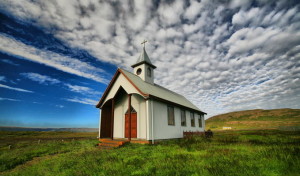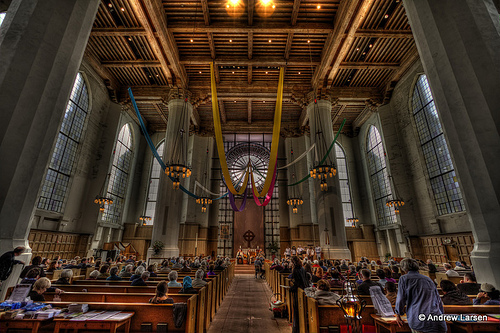(Originally posted on October 1, 2015)
Most congregations say they want to grow. (And many of them really do want that!) But there are some things to keep in mind if you are planning for growth, or if for any reason you feel your current size isn’t the one you want.
In the College and in our consulting work, we teach folks the Congregational Size model. Just the other week, I taught the model to leaders from the Willapa Region of the Diocese of Olympia. It’s a way to look at how your congregation functions based on its size.
 Size isn’t just your average Sunday attendance, or the size of your building or budget or endowment. Size affects most of the things you do–how you communicate, how you organize yourselves, the roles your leaders play, how you make decisions, and how you plan for things. Smaller congregations are less formal, and most everyone knows everyone else. Larger congregations have more complicated structures and leadership designs, and not even the priest may have current information about everyone. Size affects pretty much everything that goes on at your place, and how most people experience church with you. Therefore, if you change your size, all of that changes too. And it won’t be easy to change your size in the first place if you don’t consciously shift how all these things are done.
Size isn’t just your average Sunday attendance, or the size of your building or budget or endowment. Size affects most of the things you do–how you communicate, how you organize yourselves, the roles your leaders play, how you make decisions, and how you plan for things. Smaller congregations are less formal, and most everyone knows everyone else. Larger congregations have more complicated structures and leadership designs, and not even the priest may have current information about everyone. Size affects pretty much everything that goes on at your place, and how most people experience church with you. Therefore, if you change your size, all of that changes too. And it won’t be easy to change your size in the first place if you don’t consciously shift how all these things are done.
One way to use the Congregational Size model is to gather your congregation together, maybe after a service on Sunday, teach them the model, and have everyone come up and mark where they think your congregation is on the model. (This would be harder to do at a very large place of course, but for small and medium-sized churches, it’s a great activity.) Then have everyone talk about why they put their mark where they put it. Maybe they saw that moderately-large churches have program staff and communicate mostly in sub-groups, and that’s how they experience your church. Or maybe they thought you’re a middle-sized church (a bit smaller than moderately large) because most everyone interacts and knows each other. It’s not an exact science, and the discussion itself is key: it gets people thinking about size in a new way, and opens up ideas about what they want to do next.
Then, ask them to go back up to the chart and mark where they want the congregation to be. You want to get bigger? How much bigger? Put your mark on the size of church that’s the best fit for you. Then everyone discusses this again, and leadership lets them know what they’ll be doing next with the information.
Your people will quickly see that to grow usually means they will lose something they love, or something that’s familiar. They’ll also learn that we often have to function at a larger size if we want to grow into that size. Sometimes churches are operating and functioning as if they were bigger than they actually are, and the discussion is about how to interact more in keeping with their actual size (or stand pat, but consciously adopt new behaviors to grow membership).
In addition to a big congregational meeting, leaders can use this model in strategic planning sessions, or the priest herself can reflect on her congregation in light of the model and begin setting some goals for her ministry. There are many ways to use the Size model, but the key takeaways are this: God is present in congregations of all sizes (both a string quintet and a full orchestra can make beautiful music), size is about how we do things as much as it is about headcount, and changing your size will involve trade-offs and conscious, planned changes in how you do church in your place.
–Stephen Crippen